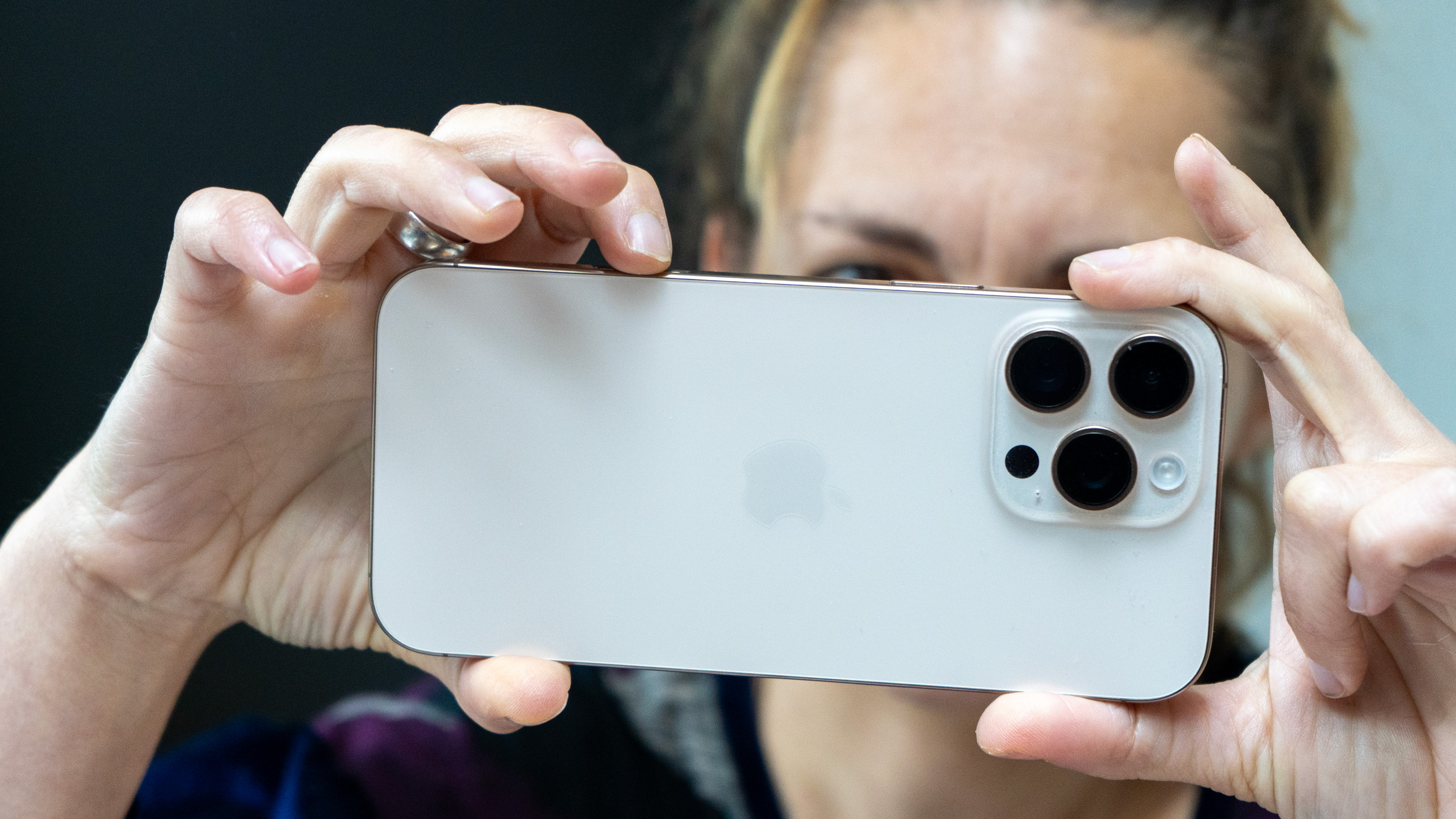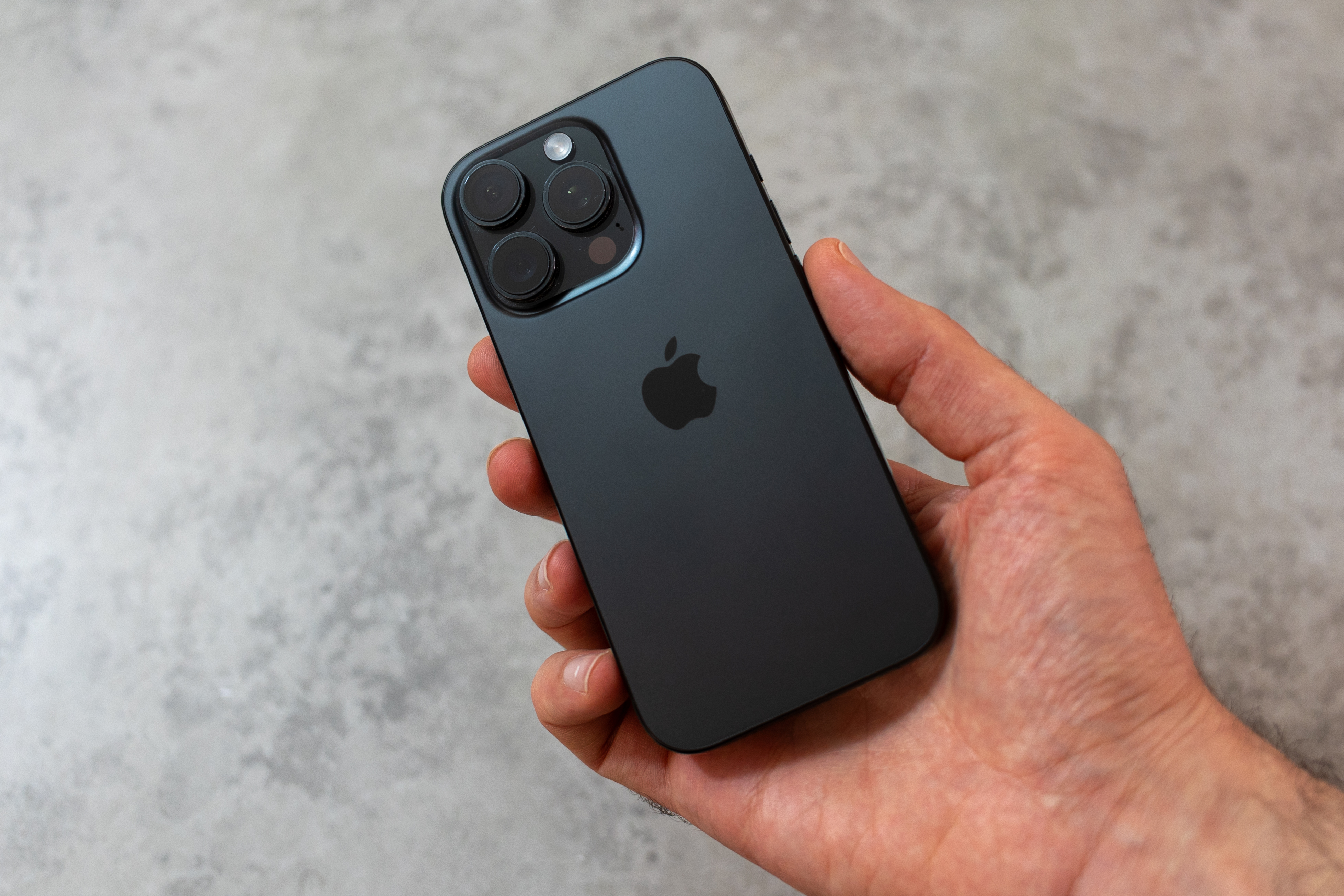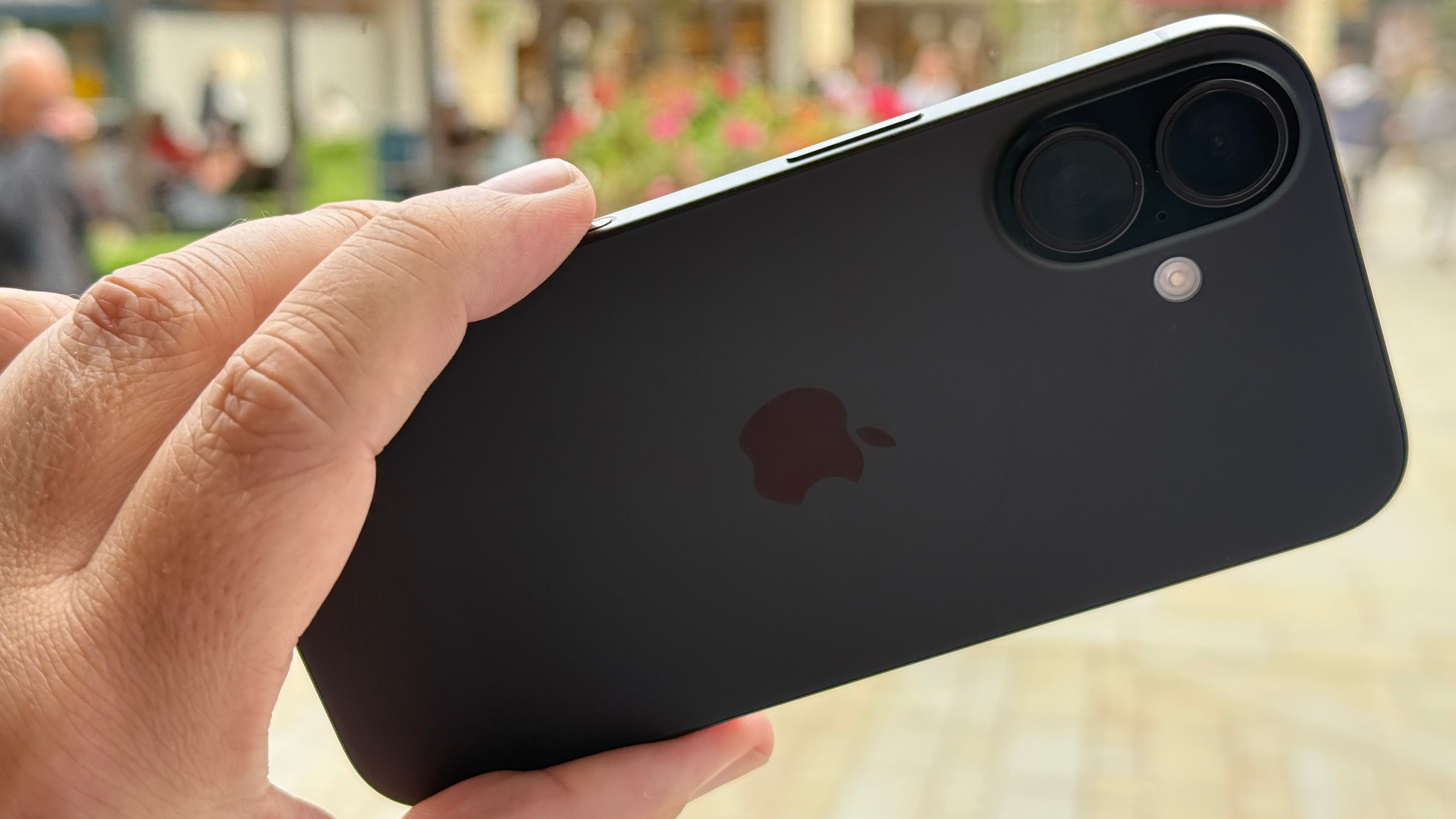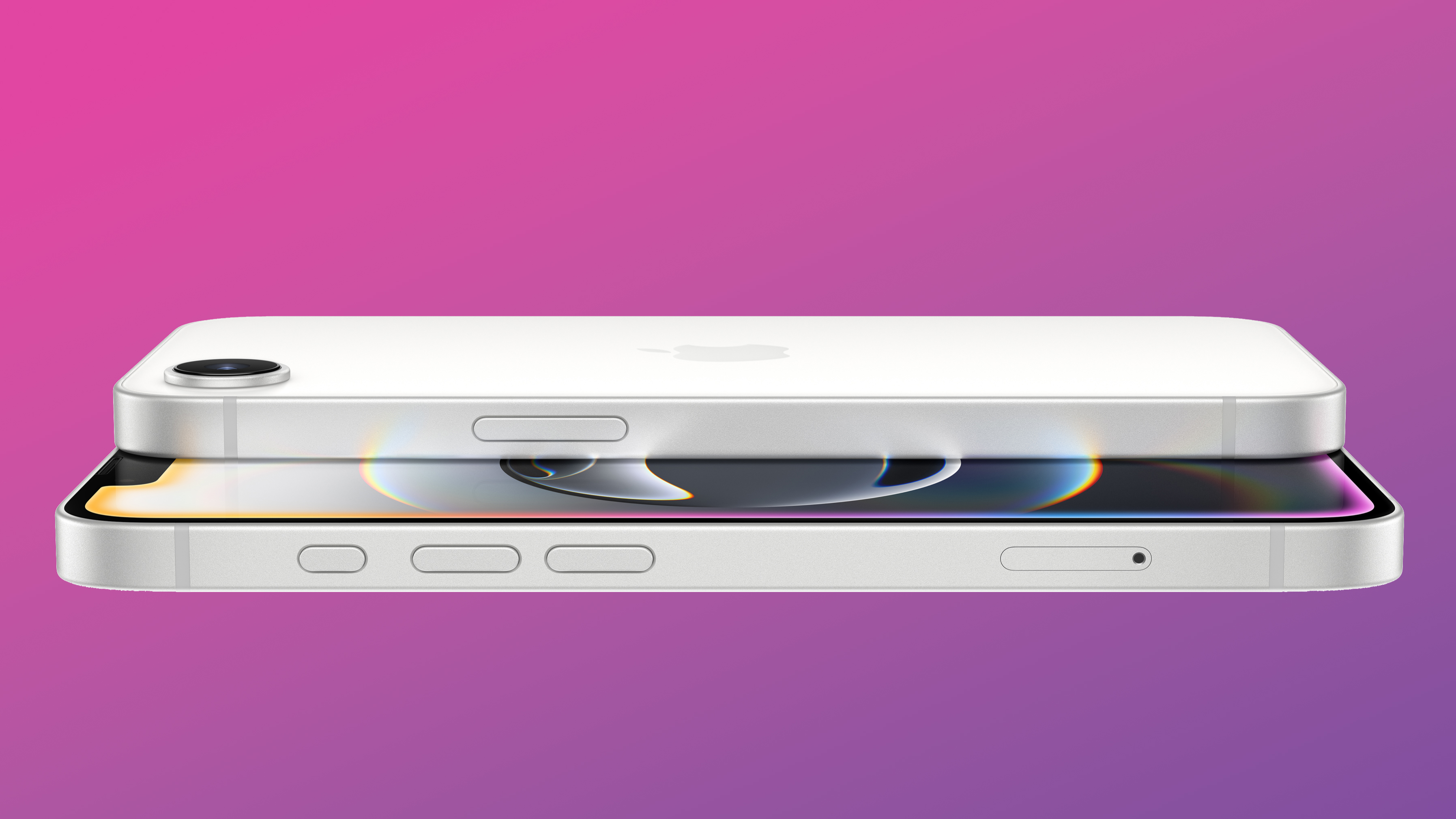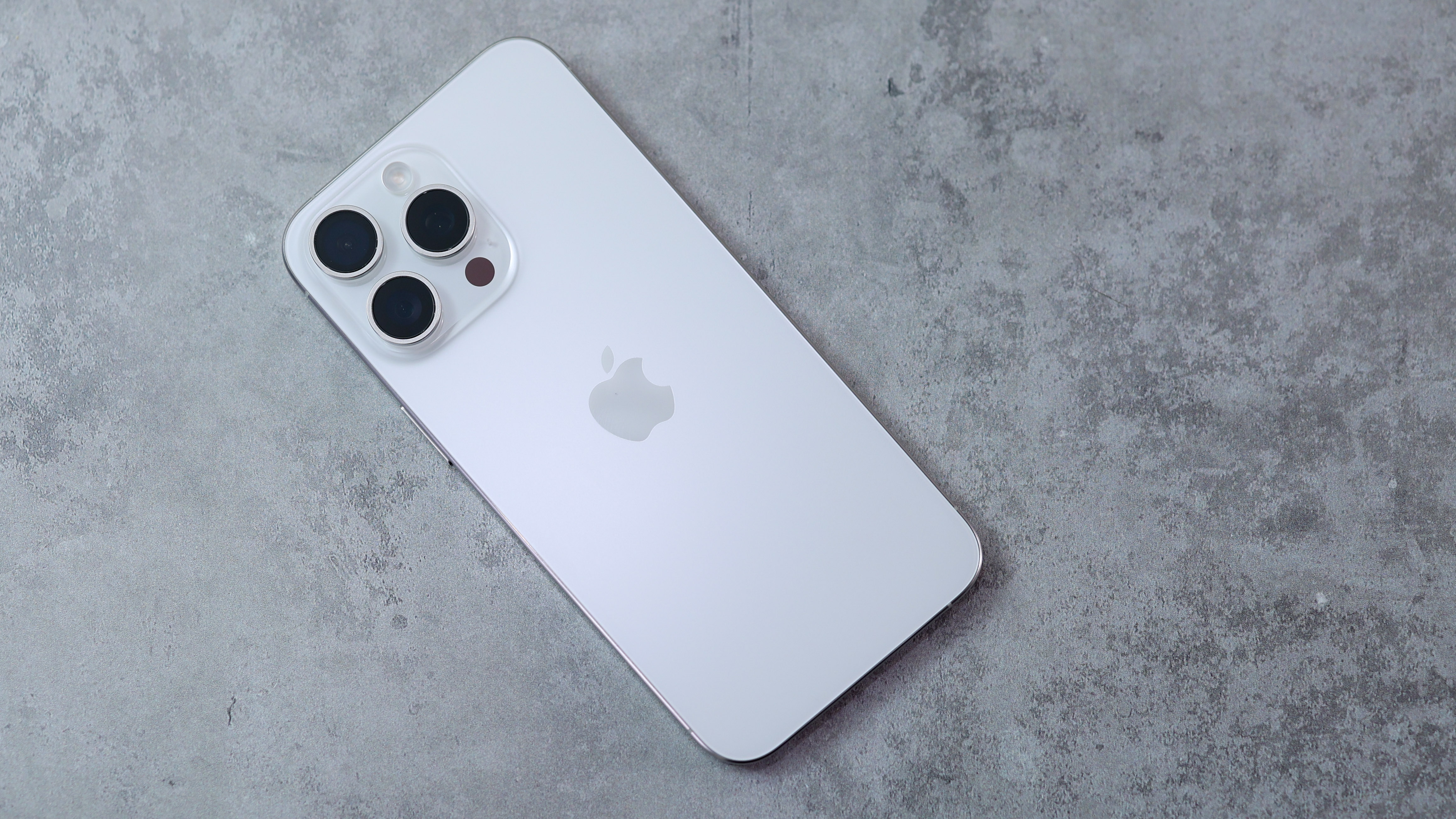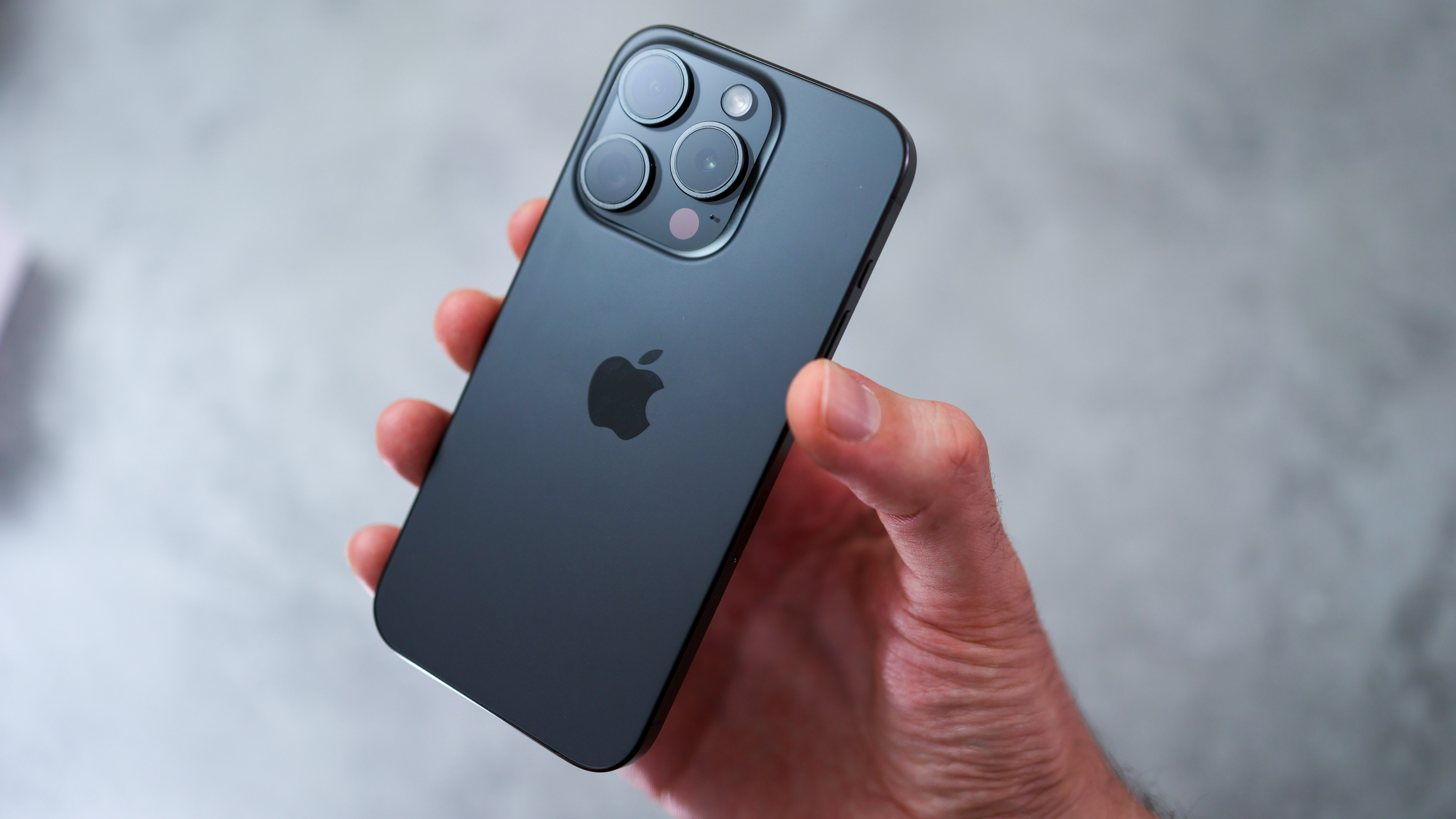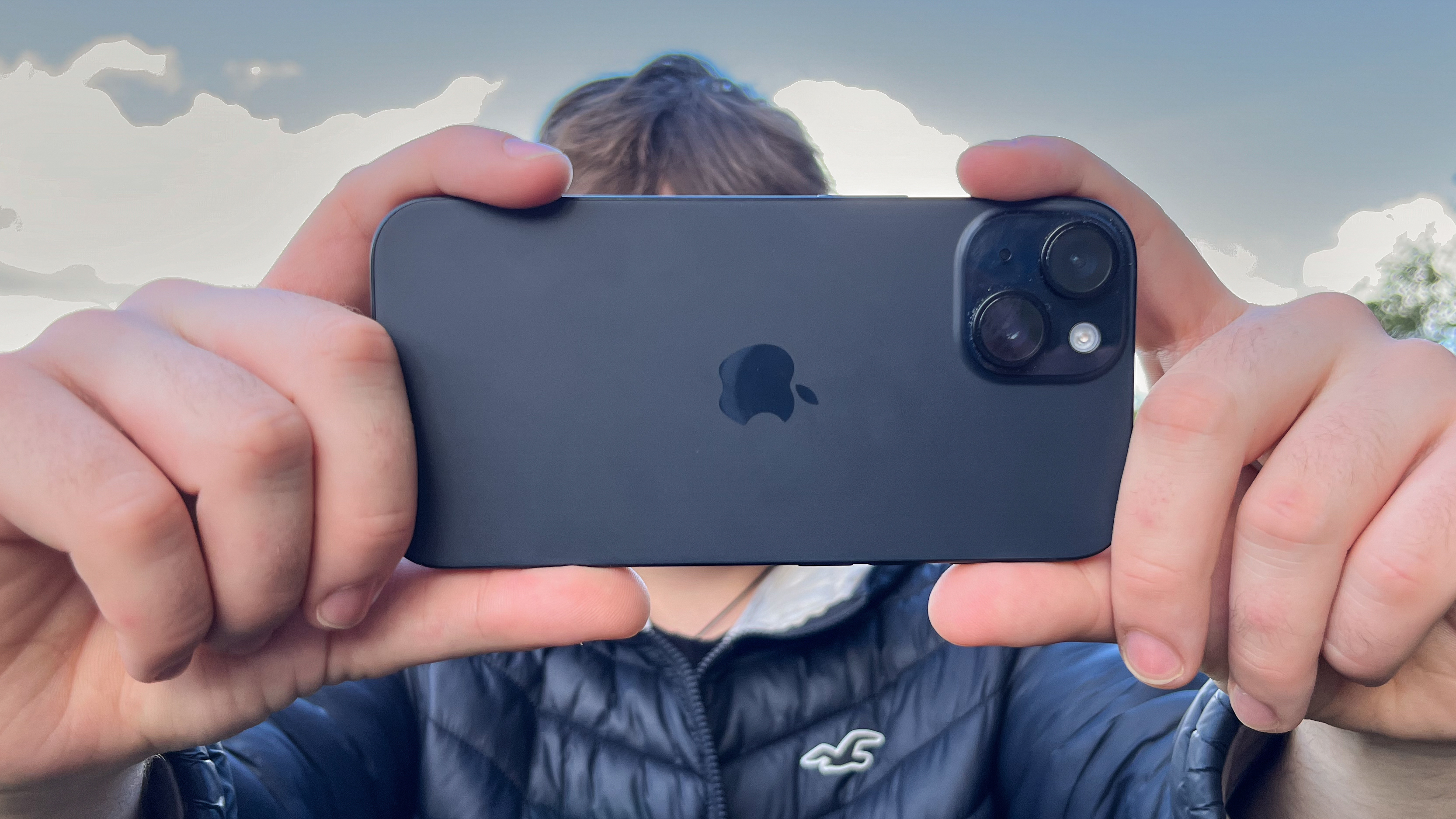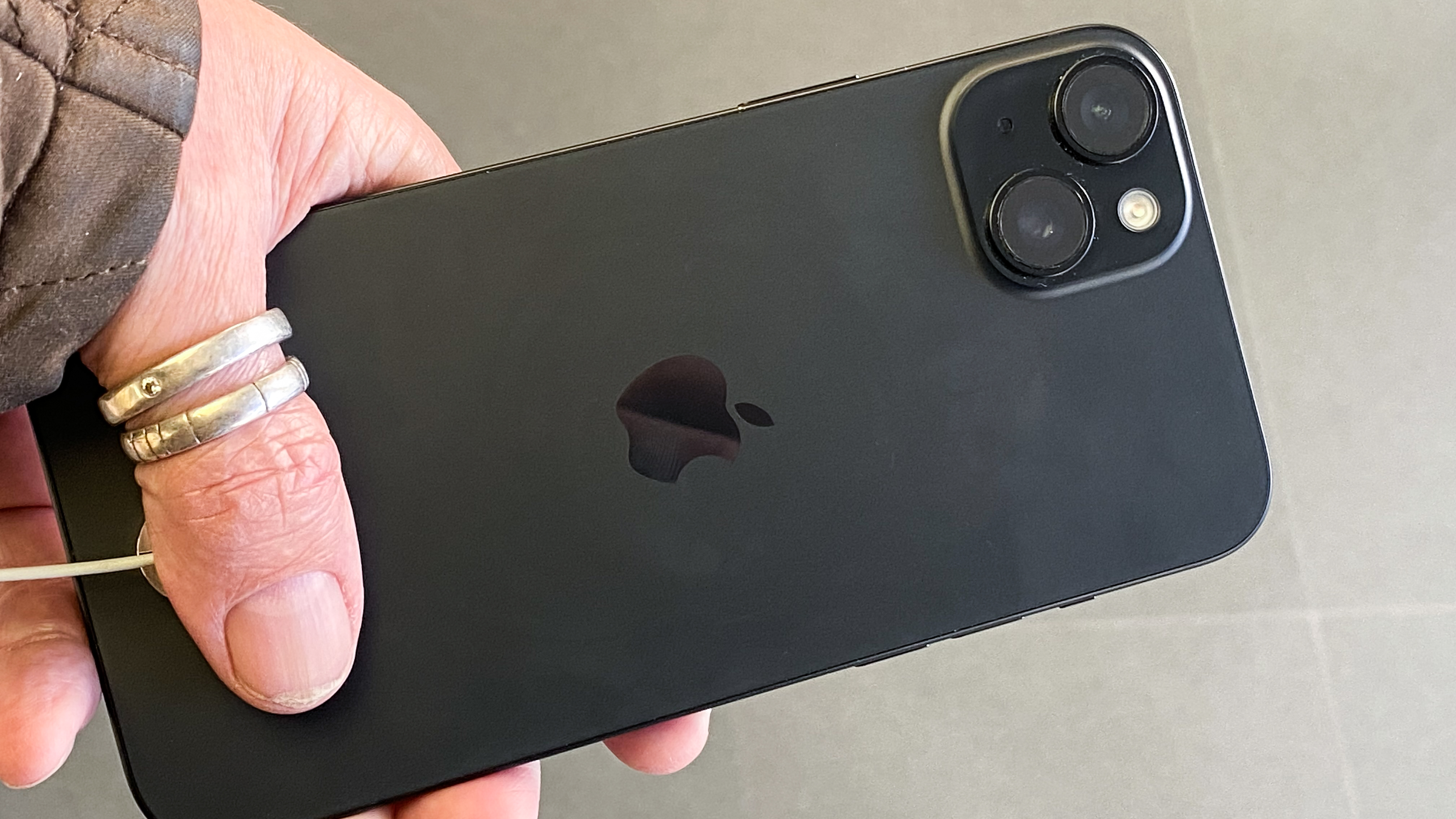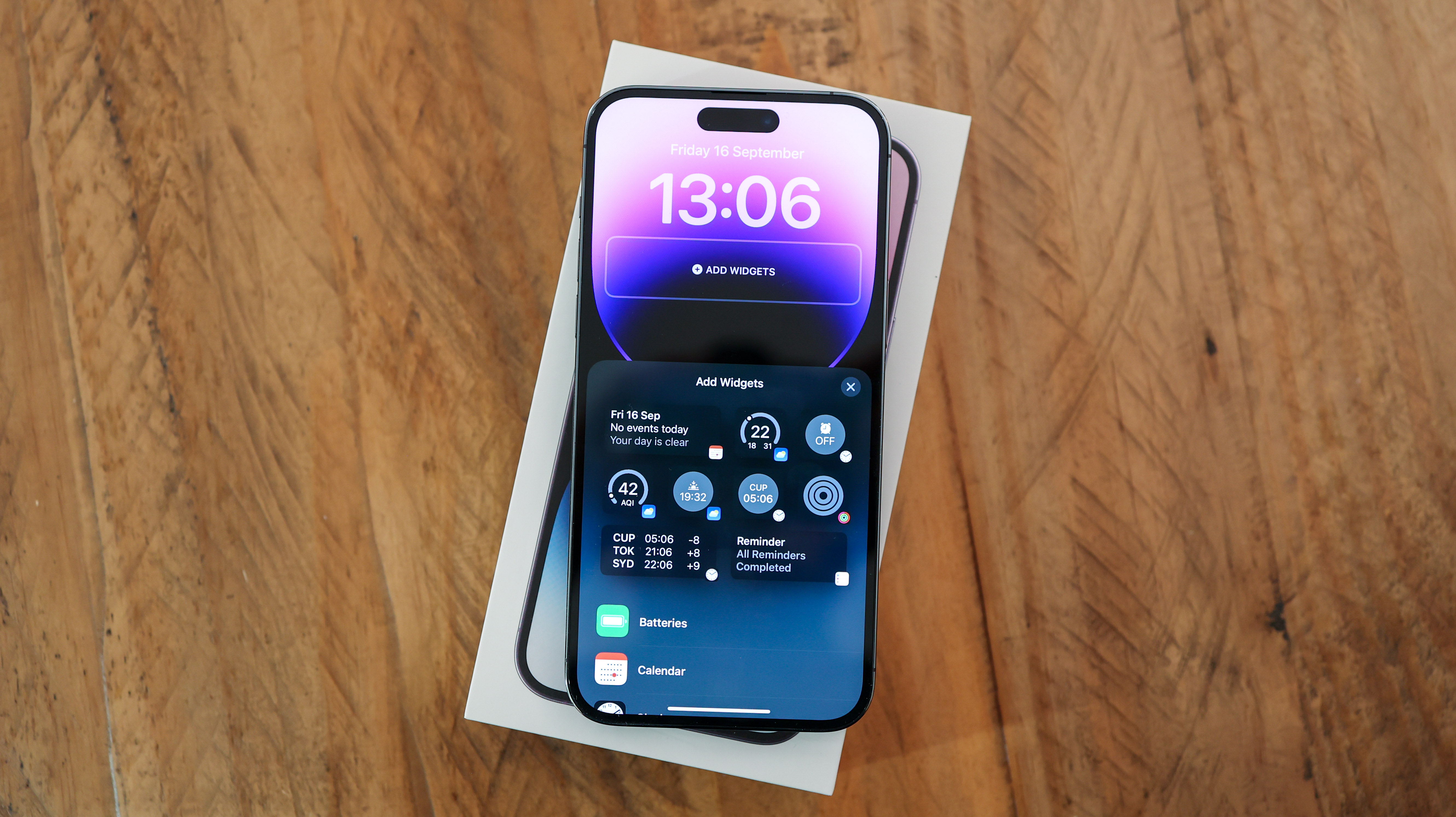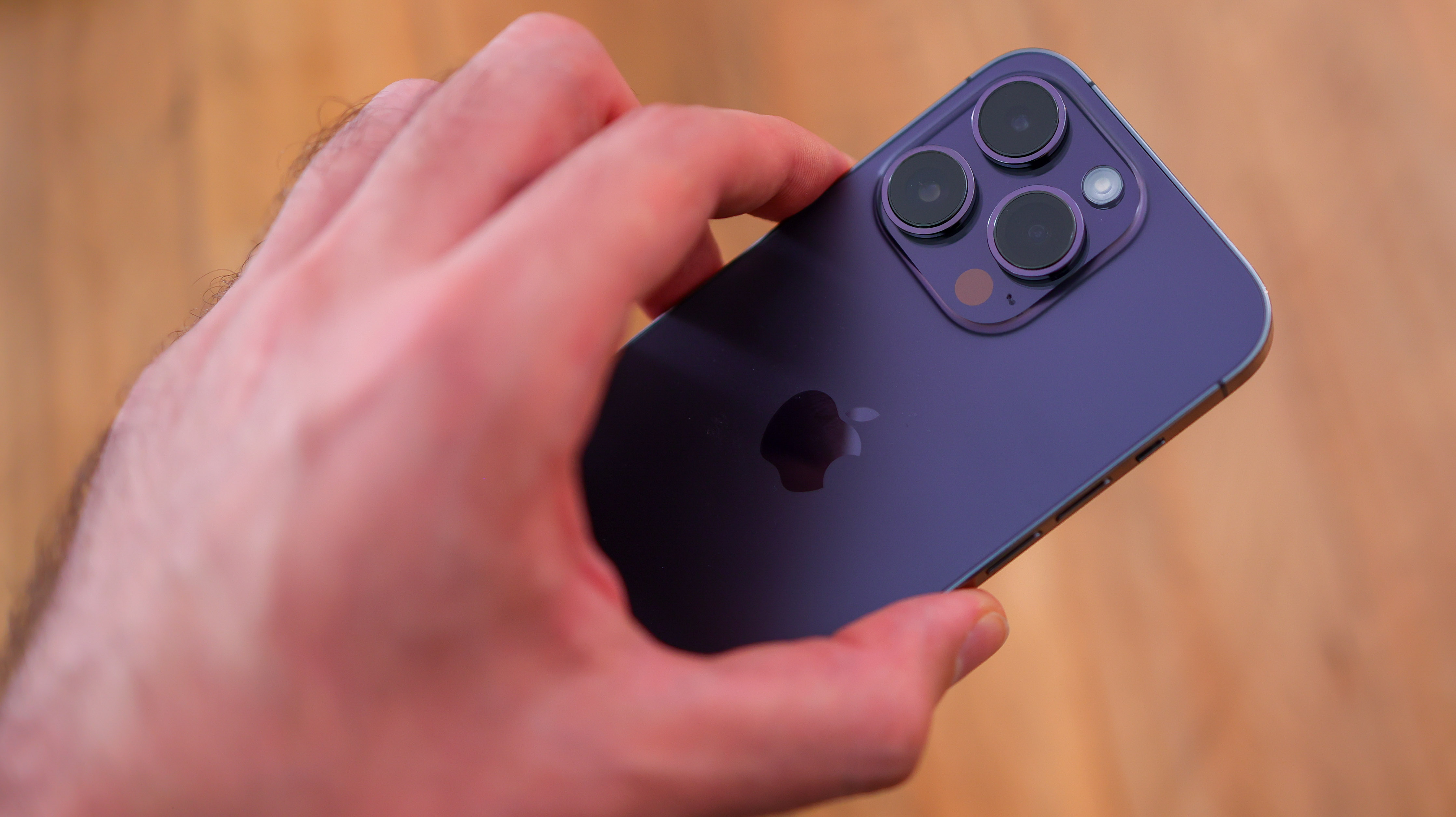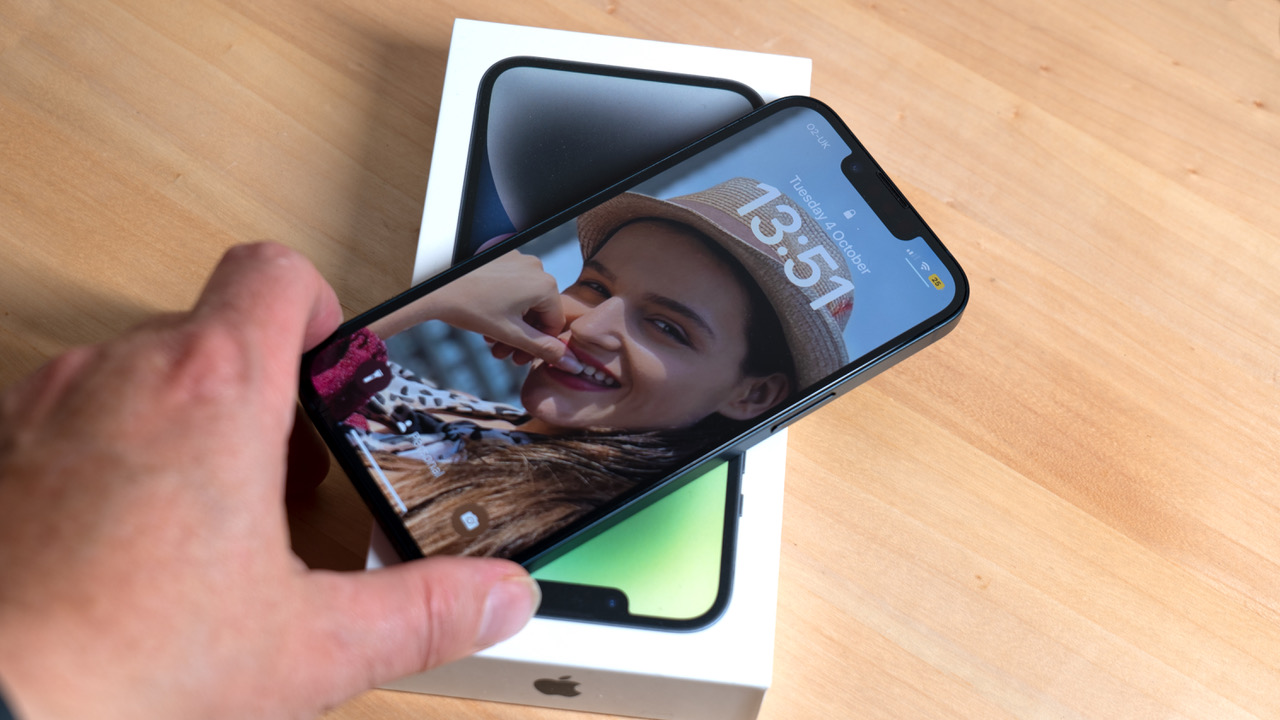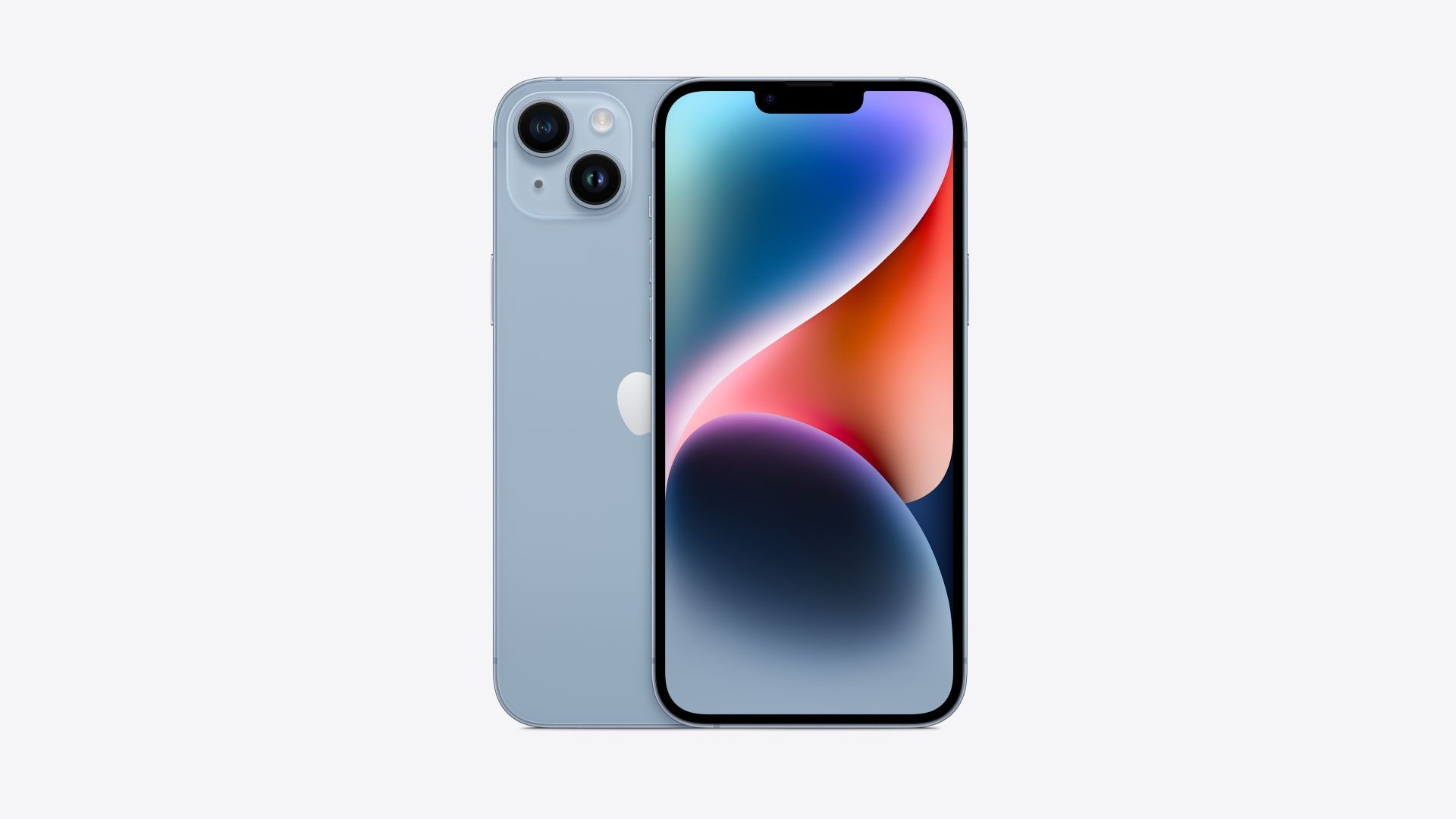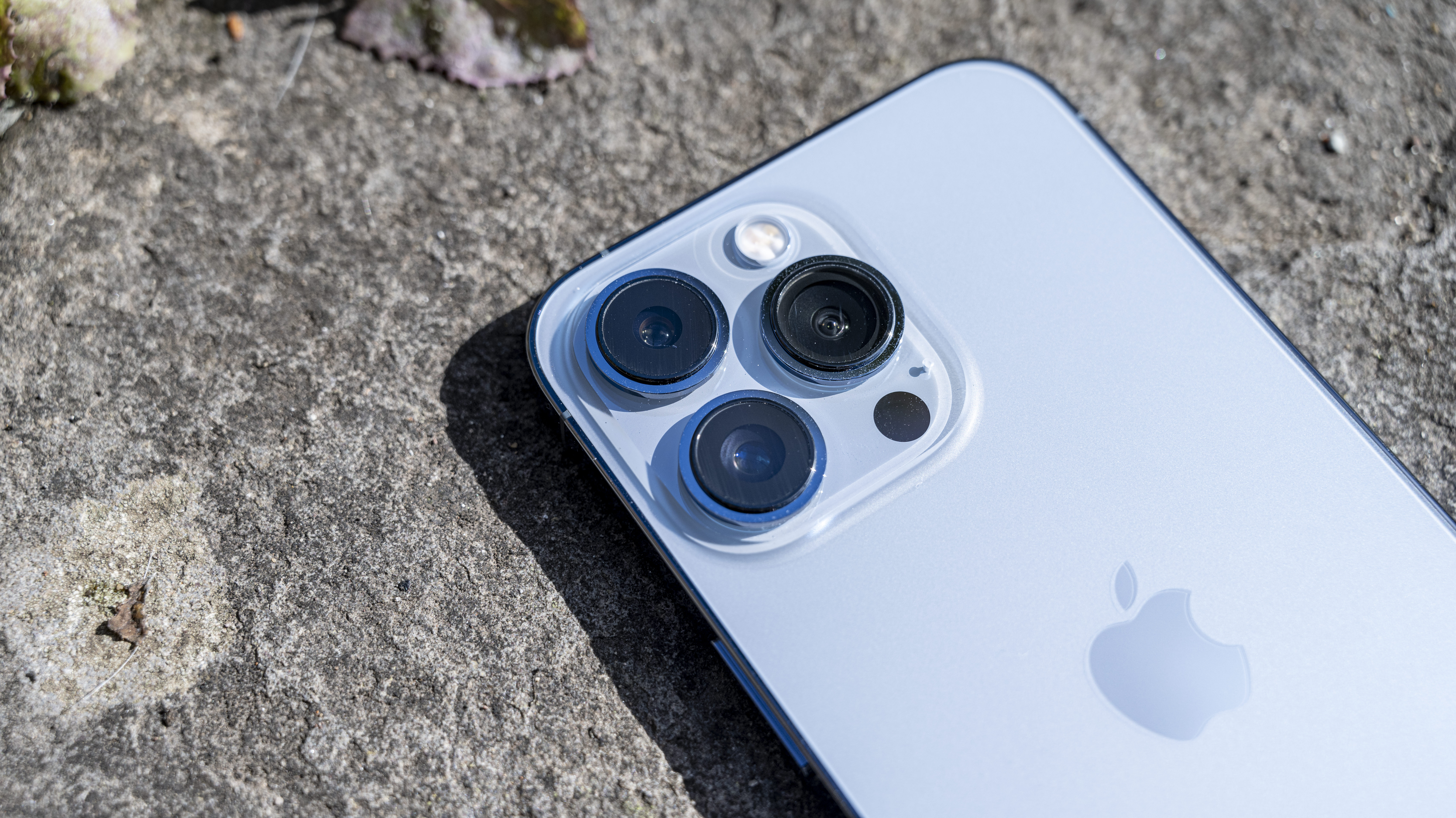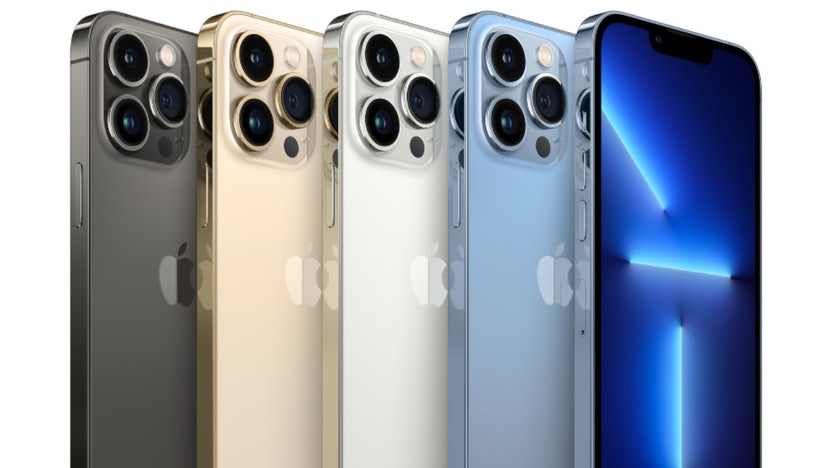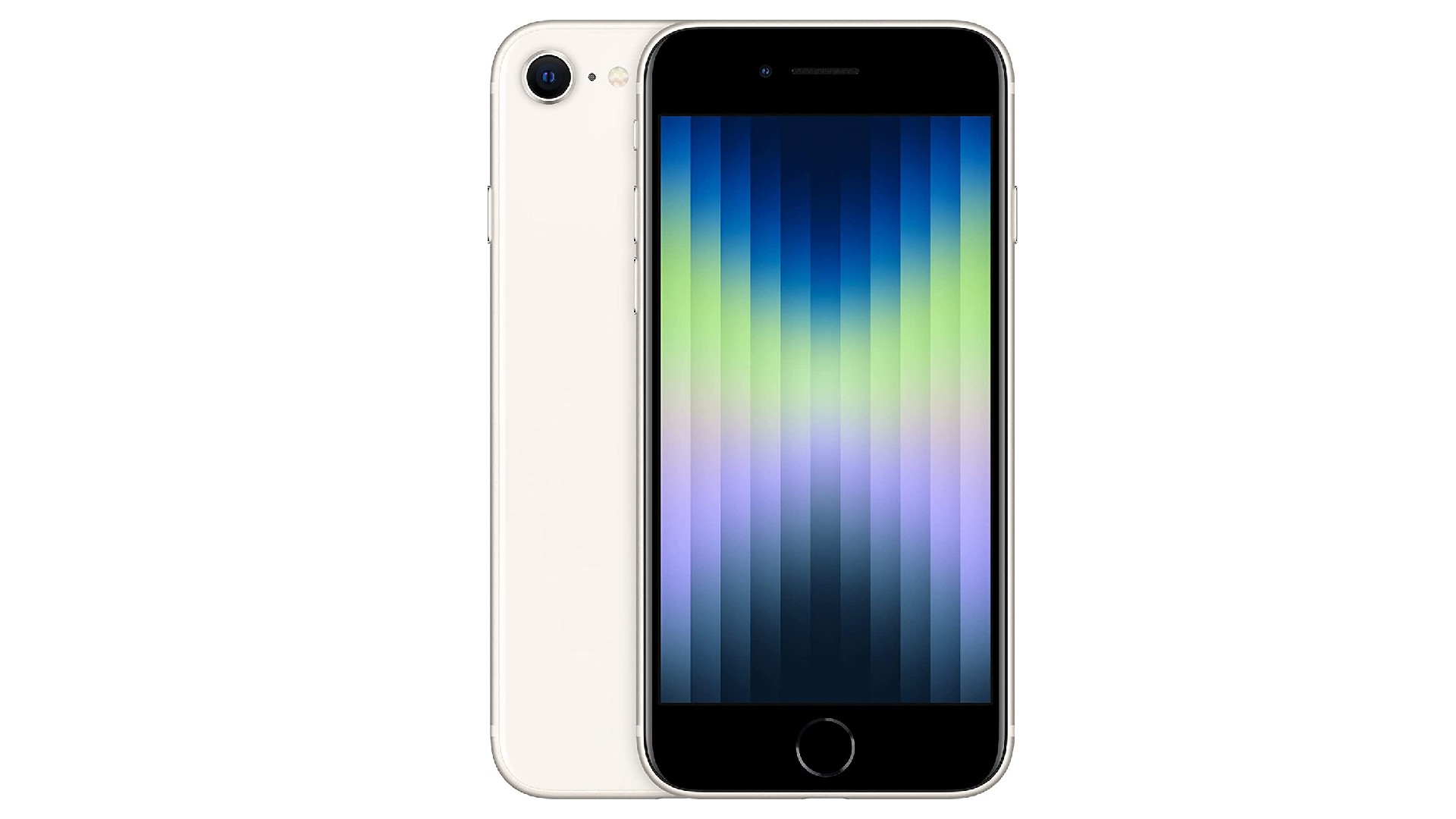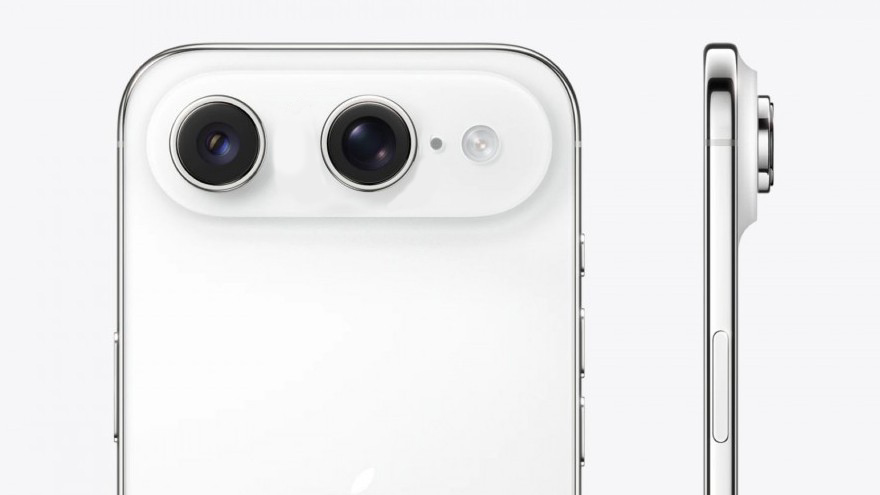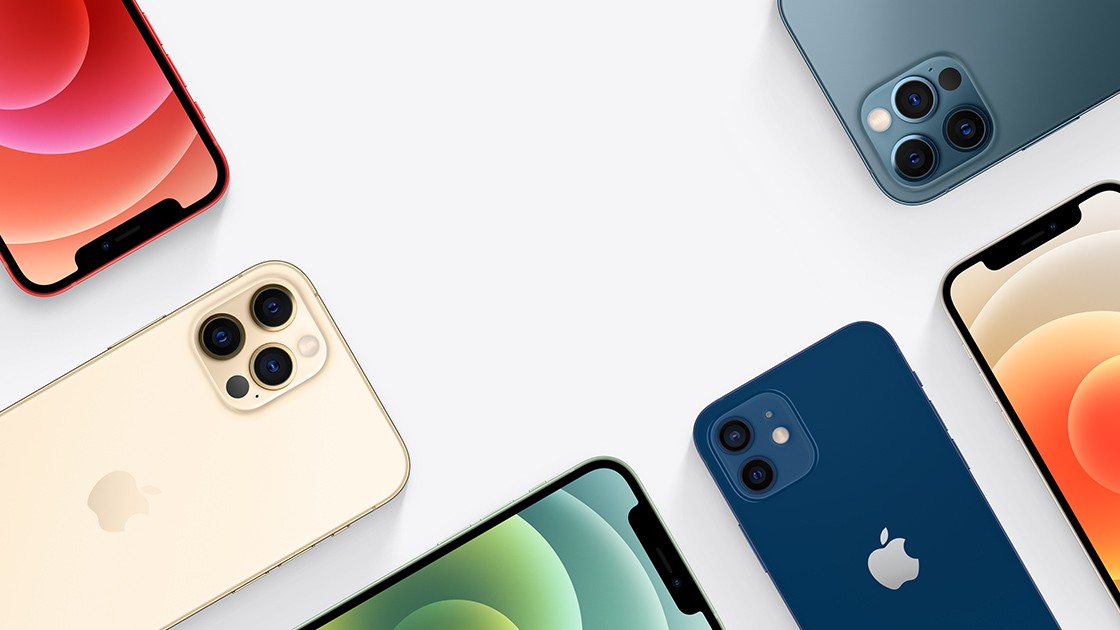
Choosing the right iPhone can feel like navigating a technological maze. With Apple continuously evolving its smartphone lineup, consumers are presented with an array of models whose qualities aren't always made obvious by the company's confusing naming system.
From the budget-friendly iPhone 16e to the cutting-edge iPhone 17 Pro Max, each model varies in terms of features, cameras, processors and more. This guide will break down how exactly they differ from each other, and give you the specs to choose the best iPhone for your budget.
Do remember, though, the best camera phone isn't necessarily an iPhone. For comparison, we also recommend checking our guides to the best Samsung phones and the best Google Phones.
iPhone generations: all the models you can buy
Why you can trust Digital Camera World
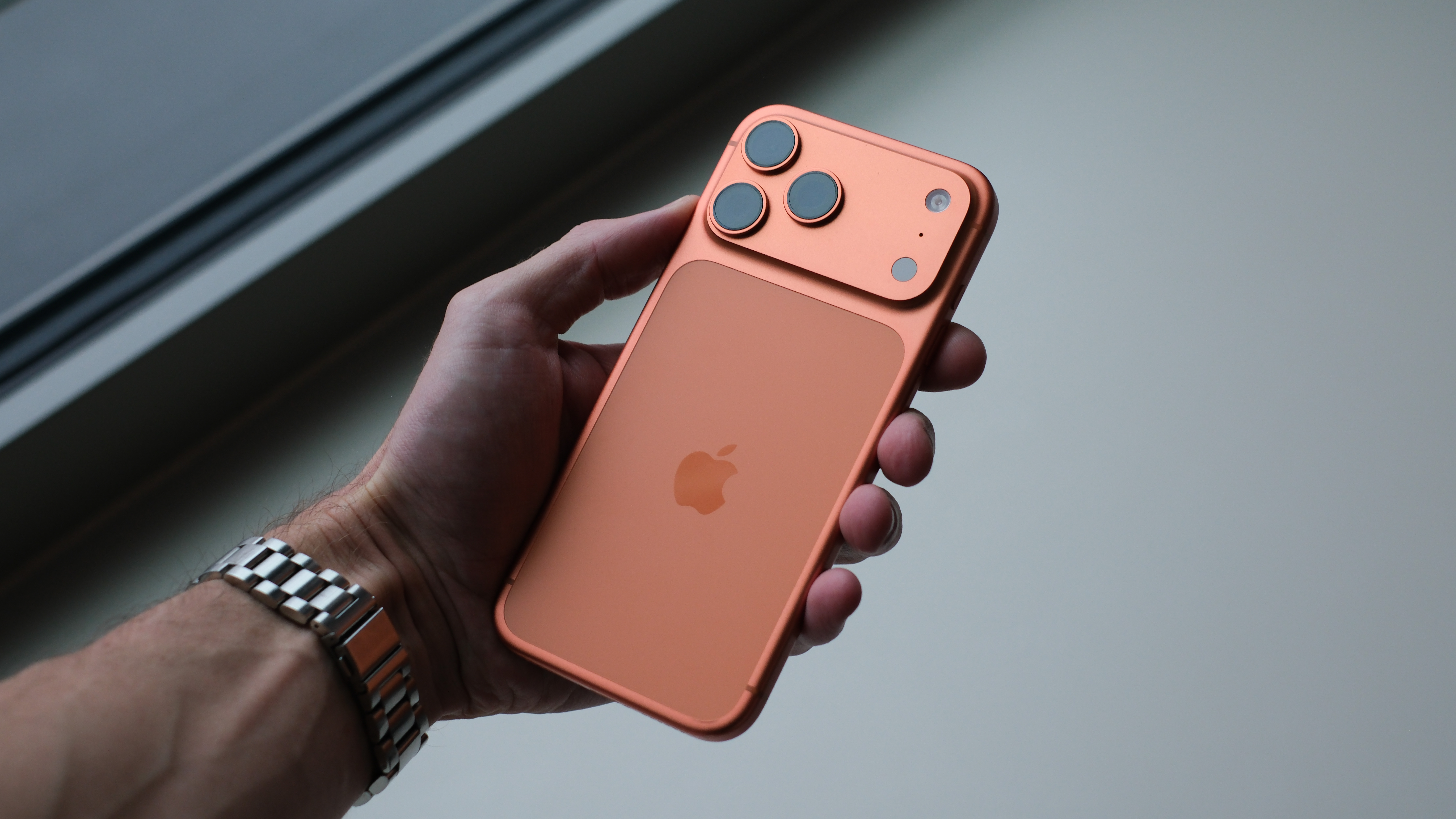
Specifications
Reasons to buy
Reasons to avoid
The iPhone 17 Pro Max is the latest and greatest iPhone, period. It features a striking new aluminum unibody construction that replaces the previous titanium build, which delivers the best-ever thermal performance in an iPhone, while enabling vibrant new anodized finishes like the standout Cosmic Orange.
The new internal architecture features a special vapor chamber to enhance heat dissipation and performance, allowing the A19 Pro chip to offer better performance than ever before. With 12GB of RAM, this powerhouse will handle everything from intensive gaming to 4K video editing with remarkable efficiency.
The camera system, meanwhile sets a new bar for iPhone photography. Three 48MP Fusion cameras (Main, Ultra Wide, and an all-new Telephoto) offer the equivalent of eight lenses, including the longest optical-quality zoom ever on iPhone at 8x. The 18MP front camera automatically adjusts the frame for group selfies and enables simultaneous front and rear recording with Dual Capture.
iPhone 17 Pro Max also offers the best battery life ever in an iPhone, with up to 39 hours of video playback in eSIM-only models. The device supports industry-first video features like ProRes RAW and genlock for professional filmmakers.
So what's the catch? Well, at a starting price of $1,199, it's expensive. And the standard iPhone 17 will do everything most people need at a much lower price. But for those demanding the absolute best iPhone experience, this is it.
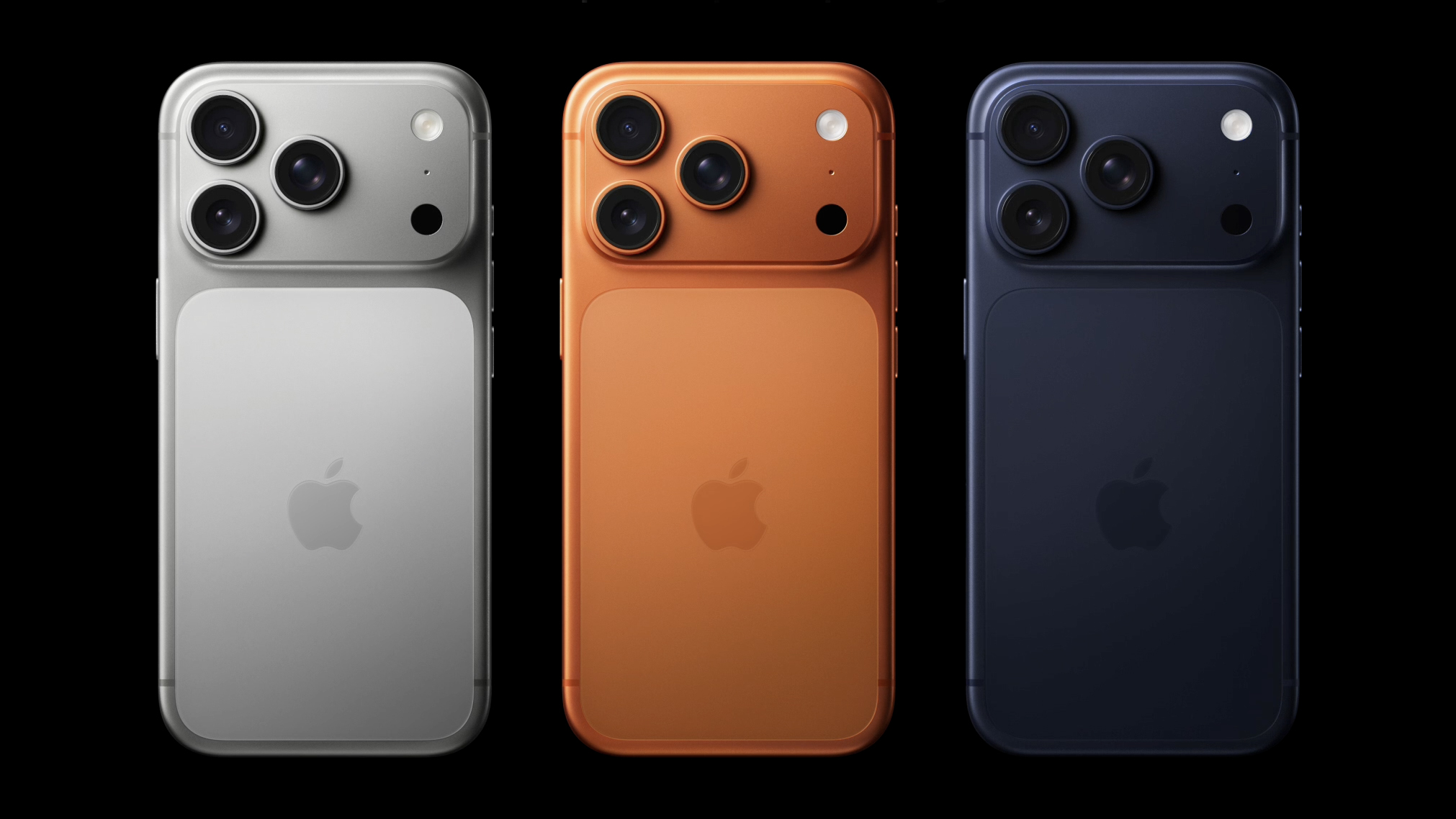
2. Apple iPhone 17 Pro (2025)
Specifications
Reasons to buy
Reasons to avoid
The iPhone 17 Pro is essentially the same phone as the iPhone 17 Pro Max, but in a more compact package. The trade-off is straightforward: you get a smaller 6.3-inch display compared to the Max's 6.9-inch screen, which means less screen real estate for viewing content and using apps. However, this makes it significantly more portable, and $100 cheaper too.
The 17 Pro features the same camera system as its larger sibling, including three 48MP Fusion cameras with the new 4x/8x optical zoom telephoto lens and the 18MP Center Stage front camera. Performance is theoretically identical too, as it has the same A19 Pro chip with 12GB RAM and same vapor chamber cooling system. However, the smaller phone may run slightly warmer during intensive tasks due to the more compact design.
Battery life is still excellent at 25-30 hours in real-world use, though it can't match the Pro Max's industry-leading 39-hour rating. The 17 Pro also maxes out at 1TB storage, lacking the Pro Max's new 2TB option.
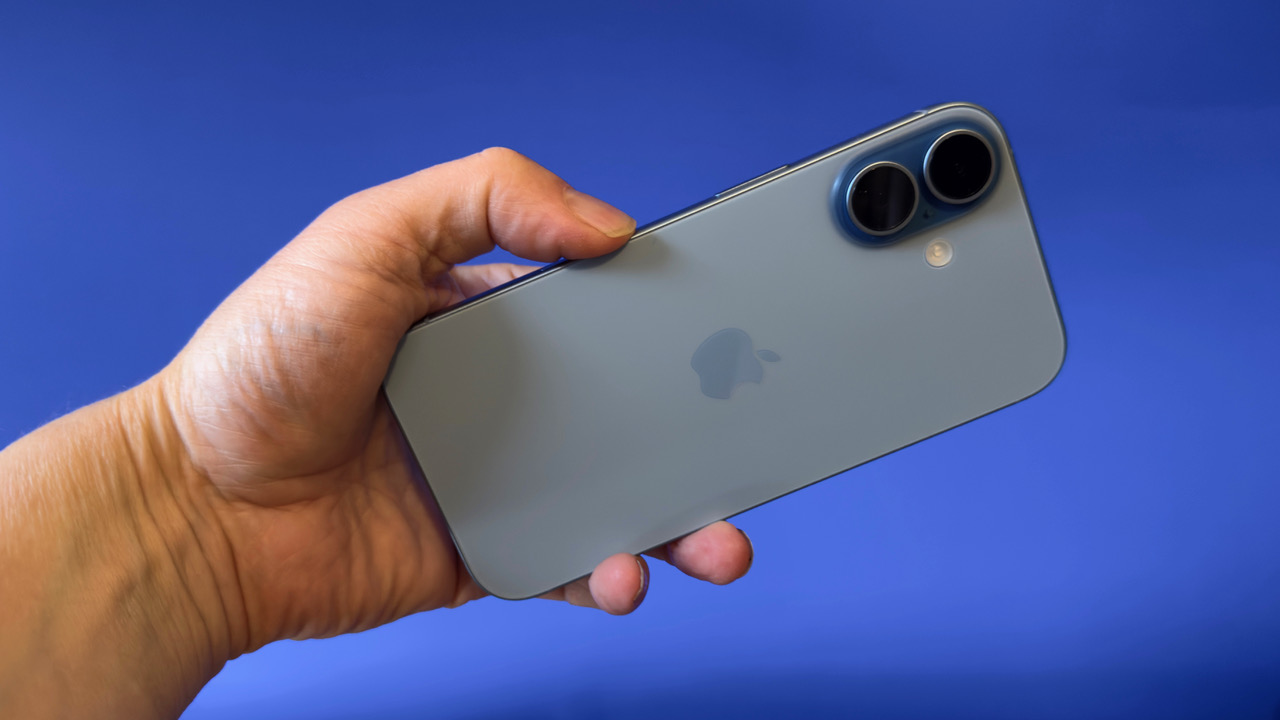
Specifications
Reasons to buy
Reasons to avoid
The iPhone 17 represents the best value in Apple's 2025 lineup, delivering features previously reversed for Pro models at the standard iPhone price point. Most significantly, this is the first standard iPhone to feature ProMotion 120Hz refresh rate and Always-On display functionality, making it feel incredibly responsive and modern compared to previous generations.
The 6.3-inch Super Retina XDR display is now larger, brighter (3,000 nits peak), and more durable thanks to Ceramic Shield 2 protection. The buttery-smooth scrolling and ability to glance at the time and notifications when the screen is off transforms the daily user experience.
Apple has upgraded both cameras to 48MP resolution, with the ultra-wide lens being a particular improvement over the 12MP version in the iPhone 16. Photos show less edge distortion, better color accuracy, and sharper detail. The new 18MP Center Stage front camera automatically adjusts for group selfies and can rotate from portrait to landscape mode without turning the phone.
Powered by the A19 chip, the iPhone 17 handles everything from gaming to video editing with ease, while maintaining excellent all-day battery life. Starting storage has doubled to 256GB at the same $799 price point as the iPhone 16. So although it lacks the telephoto lens and premium materials of the Pro lineup, for most people, this represents the best value iPhone today.
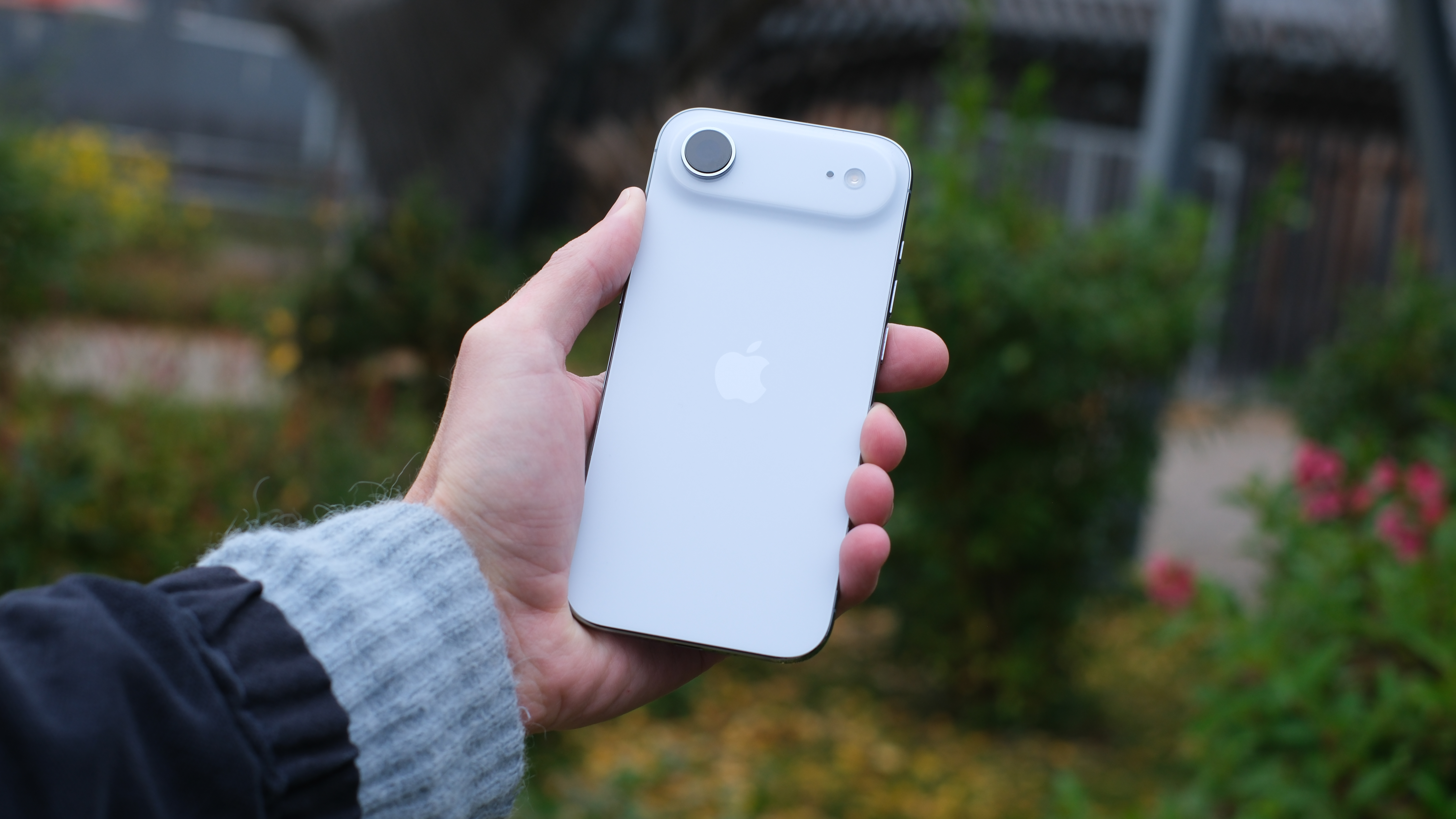
4. Apple iPhone Air (2025)
Specifications
Reasons to buy
Reasons to avoid
When you glance down this list, you'll notice the same models popping up: the Pro, the Pro Max and the standard iPhone. But the iPhone 17 has also brought in something entirely new: the iPhone Air. There's one main attraction here: an impossibly thin 5.64mm profile. This is the thinnest iPhone ever made, yet it feels remarkably sturdy and balanced in hand.
The 6.5-inch Super Retina XDR display sits between the iPhone 17 and Pro Max in size, offering a large canvas for iOS 26's new Liquid Glass interface. With ProMotion 120Hz, Always-On functionality, and 3,000 nits peak brightness, the screen experience matches the Pro models, while feeling uniquely suited to the Air's ultra-slim form factor.
Performance comes from the A19 Pro chip, delivering smooth operation across all tasks, it can get warm during sustained gaming due to its compact size. Another drawback of the Air is that you only get a single 48MP rear camera.
Starting at $999, the iPhone 17 Air costs $200 more than the iPhone 17 despite having fewer cameras and shorter battery life. However, if you want the thinnest iPhone ever, as well as being the lightest of the modern iPhones, you know where to come.
Specifications
Reasons to buy
Reasons to avoid
Last year's iPhone 16 Pro Max was a gamechanger, boasting a titanium frame housing a 6.9-inch Super Retina XDR display, which at the time was the largest iPhone screen to date. It also introduced the Camera Control button, which offers quick camera access and intuitive photo setting adjustments.
Powered by the A18 Pro chip, the device delivers exceptional performance for everything from daily tasks to intensive gaming and 4K video editing. The camera system features a new 48MP ultra-wide sensor, enhancing macro photography and low-light performance. Improved Photonic Engine processing and an AI-powered Clean Up tool further boost imaging capabilities.
On the downside, it's no longer the latest and greatest phone but it's still very expensive. For more details, see our iPhone 16 Pro Max review.
Specifications
Reasons to buy
Reasons to avoid
The iPhone 16 Pro is basically the same phone as the iPhone 16 Pro Max, but smaller. On the downside, that means it has a smaller display (6.3 inches compared to the Max's 6.9 inch), providing less screen real estate for viewing content and using apps. On the upside, that makes it more portable, and a little cheaper too. So ultimately, the choice between the two depends on your budget, and whether you prioritize a larger screen or a more compact device.
Our reviewer was broadly impressed with the Pro's performance and battery life, offering impressive longevity even under heavy use. But there were a few niggles, including the awkward placement of the Action Button, and the mediocre secondary cameras compared to Android competitors. For more details, see our iPhone 16 Pro review.
Specifications
Reasons to buy
Reasons to avoid
Don't want to spend the big bucks for the iPhone 16 Pro or Pro Max? The iPhone 16 offers pretty much the same specs at a more affordable price, making it the best value choice in last year's iPhone lineup.
After all, the main differences aren't that huge. Firstly, the Pro and Pro Max feature larger, higher-resolution displays with ProMotion technology for smoother scrolling and animations. Secondly, the Pro and Pro Max also have a more advanced camera system. Thirdly, the Pro and Pro Max are powered by the A18 Pro chip, which offers slightly better performance than the A18 in the standard iPhone 16.
Fourthly, the Pro and Pro Max have a premium titanium frame, while the standard iPhone 16 has an aluminum frame. And finally, the Pro and Pro Max have additional features like always-on display, a customizable Action button, and larger batteries.
Most people, though, won't notice these slight differences. Our reviewer found its image quality was excellent, and that the new Photographic Styles provide a wide range of customizable looks. He also appreciated the improved audio tools, the new Camera Control button and the macro photography capabilities via the Ultra Wide lens, a feature absent in the iPhone 15. So if you want a powerful, feature-rich iPhone, this model offers excellent value.
For more details, see our iPhone 16 review.
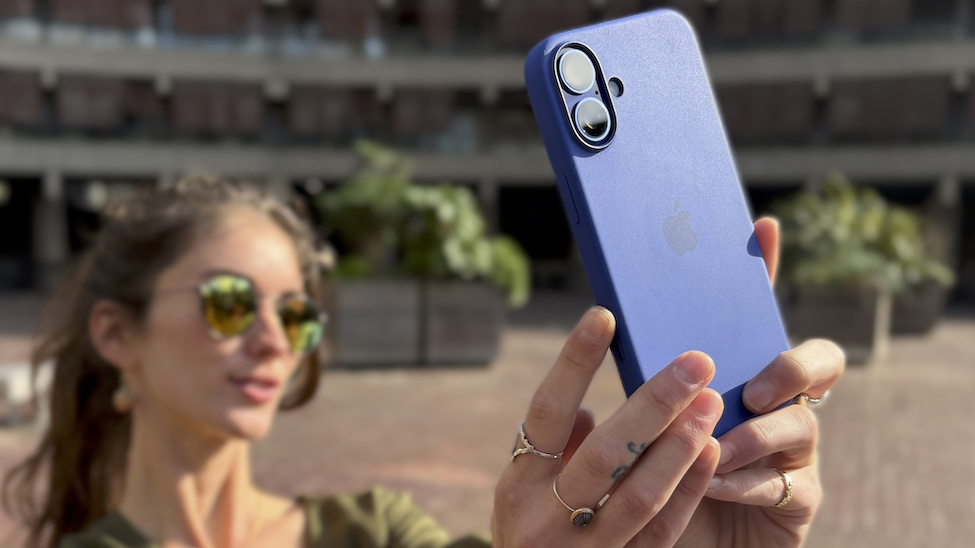
Specifications
Reasons to buy
Reasons to avoid
Like the idea of the iPhone 16 but want a bigger screen? The iPhone 16 Plus is basically the same phone but with a larger, 6.7-inch display compared to the iPhone 16's 6.1-inch screen, providing more immersive viewing for content consumption and apps. Additionally, the Plus model packs a larger battery, ensuring longer usage times between charges.
Our reviewer found the iPhone 16 Plus offers a compelling balance of large screen size and affordability within the 16 lineup. Its 6.7-inch Super Retina display provides an immersive viewing experience, second only to the Pro Max, at a lower price point than both the Pro and Pro Max models. This makes it an attractive option for those seeking a larger display without the premium cost, although its lack of Pro features may deter users who prioritize advanced photography workflows. For more details, see our iPhone 16 Plus review.
9. Apple iPhone 16e (2025)
Our expert review:
Specifications
Reasons to buy
Reasons to avoid
The iPhone 16e was a successor to its budget iPhone SE (2022), number 20 on our list, for those who want an iPhone but don't want to pay typical iPhone prices. That said, at $599 for the base 128GB model, it's much more expensive than the previous SE model.
It is, however, a lot cheaper than the iPhones listed above. And in many ways, you are getting more for your money. Most notably, iPhone 16e features a larger 6.1-inch OLED display, replacing the previous 4.7-inch screen.
Apple has also removed the home button, transitioning to Face ID and adopted USB-C connectivity. Plus the new phone includes an Action button and a single rear camera; a 48MP Fusion camera with advanced features including optical image stabilization and various photography modes.
Powered by the A18 chip, the iPhone 16e supports Apple Intelligence and offers improved performance compared to its predecessor. The phone provides up to 26 hours of video playback and includes Apple's first in-house modem chip.
To learn more, read our articles iPhone 16e – six things photographers need to know and iPhone 16E is too expensive UNLESS you do this.
Specifications
Reasons to buy
Reasons to avoid
2023's premium model, the iPhone 15 Pro Max, boasts a matte titanium frame that doesn't attract fingerprints as much as its predecessors. Also, unlike previous iPhone generations, there's a USB-C port.
There's a customizable Action Button that can change focus mode or launch the camera, torch, Voice Memo app, Magnifier, an accessibility feature, or silent mode. Plus you get an Always-on display (should you want it) and the Dynamic Island notch, a feature that only the iPhone 14 Pro had previously, which gives you access to active apps and Live Activities.
It's great on the inside too, with the Apple A17 Pro chipset making everything run nice and fast. The 6.7-inch Super Retina XDR display is big and beautiful, and the camera is the best yet, with an upgraded telephoto lens and introduces Apple's new 5x zoom tetraprism periscope system.
For more details, see our iPhone 15 Pro Max review.
Specifications
Reasons to buy
Reasons to avoid
The iPhone 15 Pro and the iPhone 15 Pro Max are pretty similar phones. The main difference is made clear in the latter's 'Max' appendage: ie it's bigger. So if you want a juicy big screen (6.7 inches rather than 6.1), go for the Max. Alternatively, if you want something that's lighter and easier to fit in your pocket, go for the Pro.
That's not the only difference. The Pro also has a less powerful battery, and the zoom is just 3x rather than 5x. But you're still getting pretty much everything else: the same Action button, the same processor, the same 16GB and so on. For more details, see our iPhone 15 Pro review.
Specifications
Reasons to buy
Reasons to avoid
The Pro and Pro Max versions of the iPhone are largely aimed at two specific types of user: those who want to create content with their phone and those who are focused on gaming. For everyone else, there's the standard iPhone.
2023's model, as ever, should be a little cheaper than its Pro equivalent, because it's not quite as sophisticated. Specifically, it doesn't have always-on functionality, the Action Button or the telephoto lens. Also, the processor's slightly less fast and the battery life slightly shorter.
However, unless you're doing advanced stuff, most people won't notice the difference. Plus it's lighter than the Pro, which many will see as a positive.
13. Apple iPhone 15 Plus (2023)
Specifications
Reasons to buy
Reasons to avoid
Like the sound of the iPhone 15, but want a bigger screen? Then you want the iPhone 15 Plus. It's a very similar phone, but with a larger screen that's 6.7 inches in diameter as opposed to 6.1. The iPhone 15 Plus also has a slightly larger 4,383mAh battery compared with 3,349mAh in the iPhone 15. On the flipside, it's heavier and a little less portable, so it depends what you value most.
Specifications
Reasons to buy
Reasons to avoid
The iPhone 14 Pro Max checks all the boxes you'd expect from an Apple smartphone. A big, immersive screen. Fancy styling. Stacks of power. A large, 1/1.28-inch, 48MP sensor, and a front camera with autofocus. So even though it's last year's model, it still has a lot to offer.
Yes, if you really want 5x zoom and a USB-C port, you'll need a later Pro Max. And this older model has a slightly less fast processor, in the form of the A16 Bionic chip. But otherwise, the differences between the two models are slight, so if you can find this one at a significant lower price, we'd still be tempted.
Specifications
Reasons to buy
Reasons to avoid
The main difference between the iPhone 14 Pro and the iPhone 14 Pro Max is the screen size. If you prefer a larger 6.7-inch screen for reviewing and editing images, shooting videos, or even playing games, then the Pro Max is definitely one to go for – as long as you can afford it. However, if you want something more compact and portable, then the 14 Pro is the one to choose.
Specifications
Reasons to buy
Reasons to avoid
Although it's now three generations back, the iPhone 14 is still a powerful phone with some nice photography and video making capabilities. However, compared to the iPhone 15, you won't get the Dynamic Island, USB-C and the main camera is just 12MP rather than 48MP. The A16 processor is less zippy, too. So overall, you'd have to be getting a big discount on the iPhone 15 to consider getting the older iPhone 14 in 2023.
Read our full iPhone 14 review for more details.
Specifications
Reasons to buy
Reasons to avoid
The iPhone 14 Plus is basically the same as the iPhone 14, but bigger. The benefit is that means it has a bigger screen (6.7 inches compared to 6.1) and room for a bigger battery too. The downside is that it's about an ounce heavier, and less likely to fit in your pocket comfortably. So which you opt for will very much be a personal thing.
For more details, see our comparison article iPhone 14 vs iPhone 14 Plus v iPhone 14 Pro vs iPhone 14 Pro Max.
Specifications
Reasons to buy
Reasons to avoid
The iPhone 13 Pro may be ageing, but it remains brilliant for photography, with three top-class lenses (standard, ultra-wide, and telephoto sensors) offering focal lengths of 26mm, 13mm, and 78mm respectively.
The telephoto range jumps from 2x with the iPhone 12 Pro to 3x. The iPhone 13 Pro also improves on its predecessor with a Cinematic mode for video, a macro mode for stills, plus the camera works better in low light too.
The beautiful OLED display is a treat for the eyes. Battery life is very impressive. The A15 Bionic chip is less powerful than that in the 14 and 15 series, but it still makes everything run quickly and smoothly. You can get up to 1TB in storage. 5G is supported. And the phone is water resistant to IP68 standards.
The iPhone 13 Pro Max (next on our list) has even better battery life, and is larger; which may be a pro or a con depending on your opinion. See Apple iPhone 13 Pro vs iPhone 14 Pro to learn more.
Specifications
Reasons to buy
Reasons to avoid
As we mentioned above, the iPhone 13 Pro Max matches the iPhone 13 Pro in all but two respects. Firstly, it has a bigger screen (6.7 inches to the latter's 6.1). And secondly, it boasts better battery life. So, for example, Apple promises up to 28 hours of video playback versus up to 22 hours on the Pro. If you decide to buy one, see our guide to the best iPhone 13 Pro Max cases.
20. iPhone SE (2022)
Specifications
Reasons to buy
Reasons to avoid
If you want a cheap iPhone and don't mind a small (4.7 inch) screen, the ageing third-generation iPhone SE might be available at a bargain price (particularly if you buy a renewed one). This phone features 5G, longer battery life, and improved durability. It also features a camera system powered by A15 Bionic, with a 12MP f/1.8 aperture wide camera on the rear that offers great tools like Portrait mode and the same Smart HDR 4 tech as the iPhone 13. The rear camera (7 MP, f/2.2) isn't half bad, either.
The iPhone SE (2022) is rated IP67 for water and dust resistance, features the familiar Home button, and supports Touch ID – an easy, private, and secure alternative for logging in to apps, authorizing purchases, and making Apple Pay transactions.
You might also like the best iPhone microphone and the best gimbal for iPhone, which will stabilize your footage. And these are the best iPhone printers.
The best camera deals, reviews, product advice, and unmissable photography news, direct to your inbox!
Tom May is a freelance writer and editor specializing in art, photography, design and travel. He has been editor of Professional Photography magazine, associate editor at Creative Bloq, and deputy editor at net magazine. He has also worked for a wide range of mainstream titles including The Sun, Radio Times, NME, T3, Heat, Company and Bella.
